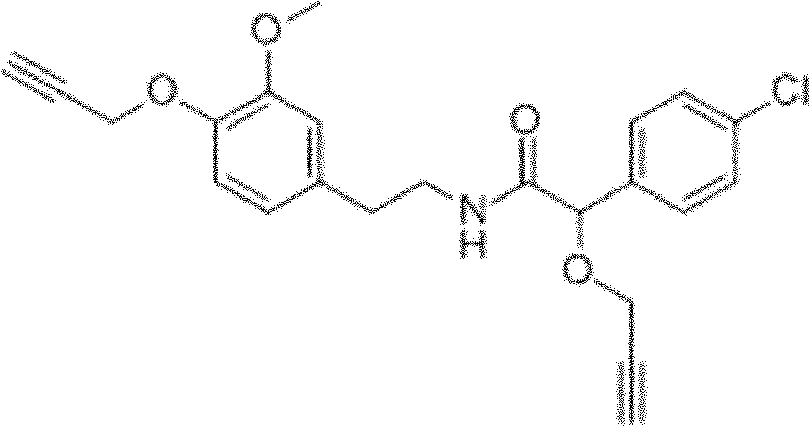Bactericidal composition containing mandipropamid
A technology of mandipropamid and its composition, which is applied in the field of agricultural fungicides, can solve the problems of unfavorable environmental sustainable development, disease resistance, and shortened duration of efficacy, so as to delay the occurrence and development of pathogen drug resistance , prolong the use effect, not easy to produce resistance effect
- Summary
- Abstract
- Description
- Claims
- Application Information
AI Technical Summary
Problems solved by technology
Method used
Image
Examples
Embodiment 180
[0063] Example 180% Proceeding Zinc·Dipropamid WP Experiment on the Control of Tomato Late Blight
[0064] 70% of Zinc Propionate, 10% of Dipropamidil, 5% of Polycarboxylate, 3% of Sodium Lauryl Sulfate, 2% of Saponin Powder, 10% of Kaolin, the mixture was air-milled to obtain 80% of Propylene Senzin · Dipropamidil WP. The ratio is diluted by 5000 times and sprayed at the initial stage of the disease, once every 7 days, for a total of 2 times. The effects of preventing and controlling tomato late blight were 91.7% and 96.2% respectively 7 days and 14 days after the treatment. 70% Prosenzinc WP and 250g / L Dipropamidil suspension were diluted 500 times and 1500 times respectively according to the same method. After use, the control effect was 65.4% and 73.5% respectively 14 days after the drug.
Embodiment 260
[0065] Example 260% Efficacy test of dysenzin·dipropamid WP in controlling tomato early blight
[0066] Dysenzinc 30%, Dipropamidil 30%, Lignin sulfonate 4%, Chaku 4%, Silica 8%, Kaolin 24%, the mixture was air-milled to obtain 60% Dysenzinc· Dipropamidil wettable powder. The ratio was diluted by 4000 times and sprayed at the initial stage of the disease, once every 7 days, for a total of 2 times. The disease index was investigated and the control effect was calculated 7 days and 14 days after the last application. The effects of preventing and controlling tomato early blight were 90.5% and 94.7% respectively 7 days and 14 days after the treatment. The 70% Zinc WP and 250g / L Dipropyram suspension were diluted 300 times and 1500 times respectively according to the same method. After use, the control effect was 63.4% and 75.6% respectively 14 days after the drug. Example 360% Efficacy test of dysenlian·dipropamid WP in the control of cucumber downy mildew
Embodiment 360
[0067] 50% of Daisenlian, 10% of pyraclostrobin, 4% of alkyl aryl polyoxyethylene ether, 4% of Sapindus japonica powder, 7% of white carbon black, 25% of kaolin, and the mixture was air-milled to obtain 55 % Dysenlian · Dipropamid WP. The ratio is diluted by 3500 times and sprayed at the initial stage of the disease, once every 7 days, for a total of 2 times, and the disease index is investigated and the control effect is calculated 7 and 14 days after the last application. The effects of controlling cucumber downy mildew were 91.8% and 96.6% respectively 7 days and 14 days after the treatment. 70% Dysenlian WP and 250g / L Dipropamid suspension were diluted 350 times and 1300 times in the same way. 14 days after the drug was used, the control effects were 62.4% and 76.7%, respectively.
PUM
 Login to View More
Login to View More Abstract
Description
Claims
Application Information
 Login to View More
Login to View More - R&D
- Intellectual Property
- Life Sciences
- Materials
- Tech Scout
- Unparalleled Data Quality
- Higher Quality Content
- 60% Fewer Hallucinations
Browse by: Latest US Patents, China's latest patents, Technical Efficacy Thesaurus, Application Domain, Technology Topic, Popular Technical Reports.
© 2025 PatSnap. All rights reserved.Legal|Privacy policy|Modern Slavery Act Transparency Statement|Sitemap|About US| Contact US: help@patsnap.com



